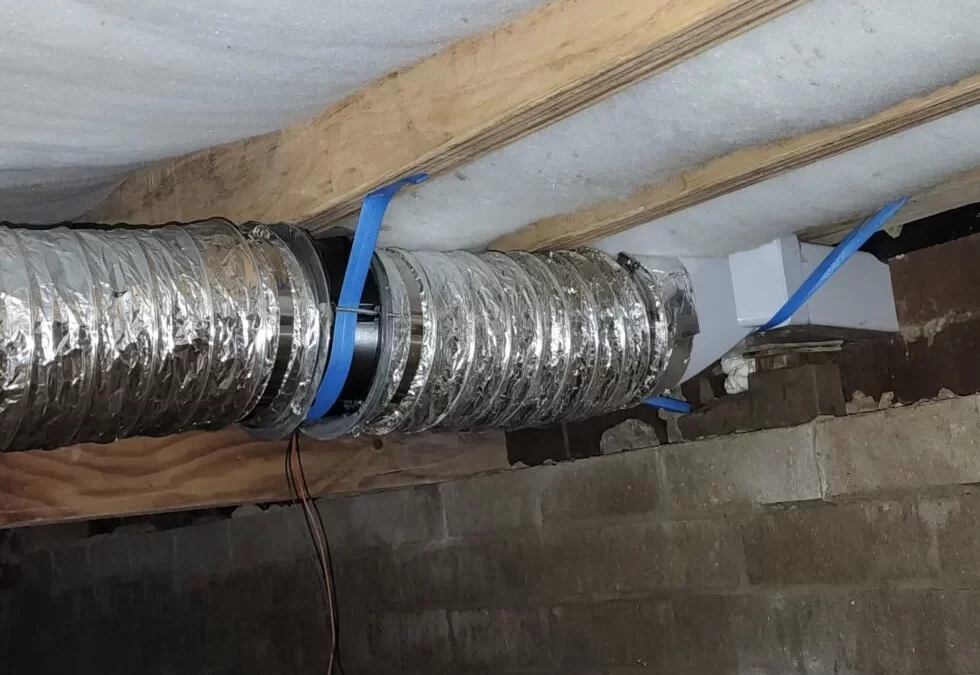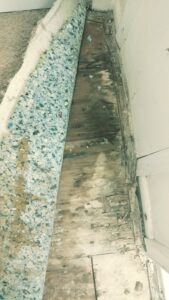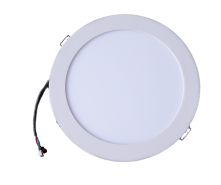Last Updated on April 19, 2024 by Website Manager
In the realm of home maintenance, one aspect often overlooked is subfloor ventilation. Yet, in the Australian context, where humidity levels can soar and termite activity is a persistent threat, effective subfloor ventilation is paramount for the health and longevity of your home. This guide aims to shed light on the importance of subfloor ventilation and provide insights into its workings, types, benefits, installation, and maintenance.
Understanding Subfloor Ventilation
Subfloor ventilation serves as a crucial mechanism for regulating moisture levels and air quality beneath your home. By facilitating air circulation, it prevents the buildup of dampness, mould, and rot, safeguarding your property’s structural integrity. Understanding how subfloor ventilation functions is the first step toward ensuring a healthy living environment.
Types of Subfloor Ventilation Systems
- Natural Ventilation:
In many homes, natural ventilation methods like crawl space vents and grilles in external walls play a role in subfloor airflow. While cost-effective, they may not always suffice, especially in humid climates.
- Mechanical Ventilation:
For more controlled airflow, mechanical systems such as subfloor ventilation fans and positive pressure units offer tailored solutions. Heat recovery ventilation adds an energy-efficient touch to the mix.
Choosing the right system depends on factors like home size, climate, and budget.
This guide here will help you in choosing the right subfloor ventilation solution for you.
Benefits of Proper Subfloor Ventilation
The benefits of investing in proper subfloor ventilation extend far beyond moisture control. From thwarting termite infestations to enhancing indoor air quality, the advantages are manifold. By addressing these aspects, homeowners can enjoy a healthier and more comfortable living environment.
Let’s delve into the myriad benefits that effective ventilation on the subfloor brings:
- Preventing dampness and condensation: Proper ventilation of your subfloor helps maintain optimal moisture levels, preventing the buildup of dampness and condensation which can lead to structural damage.
- Reducing the risk of timber rot and fungal growth: By regulating moisture levels, subfloor ventilation mitigates the conditions conducive to timber rot and fungal growth, preserving the integrity of your home’s structure.
- Termite Prevention: Adequate ventilation on sub-floor creates an inhospitable environment for termites, reducing the likelihood of infestation and potential damage to wooden structures.
- Benefits of proper sub-floor ventilation in Health and Comfort:
- Improving indoor air quality: Effective sub-floor ventilation ensures the circulation of fresh air, reducing the concentration of indoor pollutants and allergens for healthier living conditions.
- Reducing musty odours: By combating moisture buildup, subfloor ventilation helps eliminate musty odours, creating a more pleasant indoor environment.
- Enhancing overall comfort: Maintaining optimal humidity levels and air quality enhances the comfort and liveability of your home, ensuring a more enjoyable living experience.
Installation and Maintenance
Proper installation and regular maintenance are key to maximising the effectiveness of subfloor ventilation systems. Adhering to installation guidelines ensures optimal airflow, while routine checks and servicing prevent issues like blockages and malfunctions.
Subfloor Ventilation Appropriate Performance Requirements
In Australia, subfloor ventilation systems must adhere to appropriate performance requirements set forth by the National Construction Code (NCC). These regulations ensure that ventilation installations meet standards for airflow, moisture control, and structural integrity. It is essential to comply with NCC guidelines not only to ensure the effectiveness of subfloor ventilation but also to meet building code requirements and ensure the long-term stability and safety of your home. Therefore, when planning the installation or maintenance of subfloor ventilation systems, it is imperative to consult the relevant sections of the NCC to guarantee compliance with Australian standards.
DIY vs. Professional Installation
While DIY installation may seem tempting, particularly for budget-conscious homeowners, the complexities involved often warrant professional expertise. Knowing when to seek professional help can save both time and money in the long run. In Australia, reputable ventilation experts abound, offering tailored solutions for every home.
Pros of DIY Installation
- Cost-effective option for budget-conscious homeowners.
- Provides a sense of accomplishment and DIY satisfaction.
Cons of DIY Installation
- Risk of improper installation leading to inefficiency or damage.
- Limited expertise may result in suboptimal ventilation solutions.
Pros of Professional Installation
- Expertise and experience ensure proper installation tailored to your home’s needs.
- Peace of mind knowing the job is done right the first time.
Cons of Professional Installation
- Higher initial cost compared to DIY.
- Dependency on external service providers for maintenance and repairs.
When to seek professional help
Knowing when to seek professional help for subfloor ventilation is crucial for ensuring optimal results. Consider engaging professionals if you lack the necessary expertise or time for a DIY installation, or if your home requires customised ventilation solutions due to complex layouts or unique challenges.
Additionally, if you encounter issues with existing ventilation systems, such as persistent dampness or inefficiency, it’s advisable to seek professional assessment and assistance to rectify the problem effectively. By entrusting the task to experienced professionals, you can rest assured that your subfloor ventilation needs are addressed comprehensively and with precision.
Case Studies and Success Stories
For years, Solar Whiz has actively resolved subfloor ventilation issues for Australian families, delivering tangible results that enhance indoor air quality and comfort. Through their innovative solar-powered ventilation systems, Solar Whiz harnesses the power of the sun to provide sustainable solutions for moisture control and odour elimination. With a reputation for delivering effective outcomes, Solar Whiz has become a trusted name in the industry, consistently improving the liveability of homes across Australia.
Conclusion
In conclusion, subfloor ventilation emerges as a cornerstone of Australian home care, offering myriad benefits for both property and occupants. Effective subfloor ventilation requires quality components and proper installation. Solar Whiz subfloor ventilation systems are designed based on years of knowledge and experience, ensuring optimal performance and durability. Given that no two subfloor areas are the same, there is no one-size-fits-all solution to subfloor ventilation. This is why Solar Whiz places a strong emphasis on customised solutions and after-sales support to help you get the most from your system. By heeding the insights provided in this guide and choosing reputable providers like Solar Whiz, Australian homeowners can safeguard their investment and enjoy a healthier living environment for years to come.
Frequently Asked Questions
How can you cure dampness in a sub-floor of your home?
- Remove obstructions from your sub-floor to allow proper air flow.
- Consider replacing traditional terracotta or cast iron vents with more efficient options.
- Install a suitable sub-floor ventilation system that matches the size of the sub-floor space.
How do you get moisture out of a subfloor?
To remove moisture from a subfloor, consider installing a subfloor ventilation system to facilitate air circulation. Additionally, use dehumidifiers or fans to expedite drying. Ensure proper drainage around the perimeter of the house to prevent water accumulation. Regularly inspect for leaks and address them promptly.
How much does it cost to install sub floor ventilation?
Installation cost varies enormously. Installation may be simple and straightforward if no ducting is required – and there is enough height in the subfloor to install a subfloor ventilation fan in the wall or the house. At the other end of the spectrum, some installations require ducting and therefore full access to the subfloor, which may require digging out soil from under the house, making such installations very expensive. It is therefore not possible to give a general cost indication – as each installation must be evaluated by an installer to determine the specific requirements for the site.
How quickly does mould spread in flooring?
Mould starts to grow within 24 to 48 hours if the right conditions are present. The more moisture present, the quicker mould will take hold and spread. In general, a humidity level higher than 60% is ideal for mould growth. Mould will continue to grow until these surfaces have dried out sufficiently (to 20% moisture content or less), making it impossible for the mould fungi to survive.
How do you reduce humidity in a subfloor?
To decrease subfloor humidity, use the Solar Whiz subfloor vent system to enhance airflow. Additionally, install ducting to efficiently extract excess moisture, thereby reducing overall moisture levels in the subfloor area. This proactive approach mitigates the risk of dampness and potential mould growth, fostering a healthier indoor environment.
How do you stop subfloor condensation?
Installing a subfloor ventilation system involves the extraction of damp air from your living space, thereby facilitating the entry of dry, fresh air into the underlying areas of your floor. Positioned within the subfloor space, this system acts as a barrier, preventing excessive moisture from infiltrating your subfloor space.
You might also like:
- Poor Subfloor Ventilation: Causes, Signs & Solutions
- Why is Ventilation Important during Winter?
- The Winter Trap: How It Worsens Indoor Air Quality
- Healthy Air, Happy Home: Solar Whiz Ventilation System Help Prevent Mould & Mildew
- Why is Warehouse Ventilation in Winter Important?
- How Can Proper Roof Ventilation Extend the Longevity of Your Roof?





